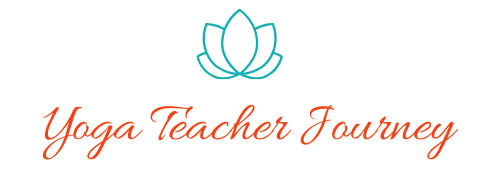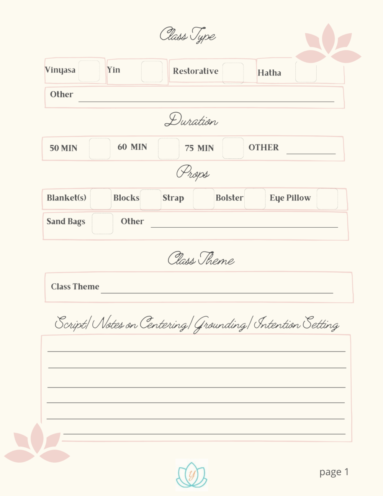The Buzz
If you’re anything like me, when you hear a new buzzword you must investigate! I’ve been hearing and seeing lots lately about “breathwork” (one word). I became curious about breathwork events with no mention of yoga in their description. How can this be? The breath work I’m familiar with is the fourth limb of yoga, Pranayama (breath control). And so, I investigated.
We know breathwork is nothing new. It’s been around for thousands of years. According to Alchemyofbreath.com “breath-centered practices and meditations can be found in many ancient cultures and religions including Taoism, Buddhism, Hinduism, Christianity, Yoga, Qigong, Shamanism, Sufism, and martial arts.”
They go on to explain, “many of these cultures and religions used breathing techniques for similar reasons as Modern Breathwork – to alter consciousness for spiritual purposes, self-discovery, and healing.” So, does that mean it is different from Pranayama? My investigation continued.
Pranayama and Modern Breathwork Origination
In Patanjali’s Yoga Sutras written some 2,000 plus years ago, Pranayama is described as breath control, a tool to strengthen the connection between mind and body. In our yoga practice today, we use various pranayama practices to achieve different results. For example, the balancing properties of Nadi Shodhana (alternate nostril breathing), the energizing effects of the Breath of Joy, or the grounding benefits of a simple extended exhale.
However, the many variations of today’s modern breathwork seem to be focused on healing or releasing trauma; although, the experience can greatly differ from one person to the next. Holotropic and Rebirthing are two of the major variants of breathwork that emerged from Conscious Connected Breathwork (CCB) born in the 1960s. Since then, dozens of other forms of breathwork have developed. Learn more about the history of breathwork here.
Serendipity
During my research, the name David Elliott appeared frequently in my searches. I watched a YouTube video interview with David where he described his initiation into the realm of breathwork and I became further intrigued.
Shortly after watching the video, I visited a friend at the beach. As we chatted, she was telling me about her upcoming travels and how she planned to finish her Breathwork Facilitator training in New Mexico with – guess who – David Elliott! What?! I had no idea. I’d never heard of him a few weeks prior and now someone in my circle is certified in this type of breathwork! Don’t you love it when this happens? I was receiving signs from the Universe to continue down this path – and it didn’t stop there. My friend recommended reading his books, (The Reluctant Healer, and Healing) the latter which I promptly ordered and began reading.
But serendipity continued. When I returned home, I saw a breathwork event advertised at my favorite local boutique and healing center, Gypsy Systers. Take a guess which type of breathwork the facilitator was certified in? You got it – David Elliott. Of all the dozens of types of breathwork out there, this was the one I was meant to experience. And so I did!
Firsthand Experience
I would be remiss to write about breathwork without engaging in it myself firsthand. Of course, I have practiced a ton of pranayama, after all I am a yoga teacher, and lifelong student of yoga. But, I had yet to practice this trendy “breathwork,” with no yoga involved.
As I signed-up for my first event, my intention was purely to explore “breathwork.” I was doing my due diligence and needed this firsthand knowledge to effectively write my blog post, I told myself. I totally believed that I had no trauma to work through. It’s not that I didn’t have trauma in my life. It’s just that I believed I had worked through all that trauma through adulthood, and my practices of yoga, mindfulness meditation, and yes, pranayama.
I registered for the group breathwork session with no expectations other than to learn what this was all about. I had no idea the wild journey I was about to embark upon.
As mentioned earlier, there are a plethora of variations of breathwork. For each of these, each person’s experience can be completely unique.
My Journey
I entered a small room (with a delightful zen vibe) of seven or eight people including the facilitator. I brought a yoga mat, an eye pillow, and a blanket, as suggested. I chose one of the few spots still available – close to the front of the room and the facilitator. After engaging in introductions and a brief coloring exercise (an ice breaker and to unleash creativity, I imagine), we received a brief explanation of what we were about to do, including instructions on how to breathe.
This particular breathwork, called simply “Breathwork” was a two-stage breath, with two inhales and one exhale all done through the mouth. The session was enhanced by music which was played at a relatively high volume. I believe the music helps to release emotions, at least it did for me.
I placed my eye pillow over my eyes, covered myself with my blanket and the music began. I began my two-stage breath somewhat slowly, still getting used to this method. In yoga, we breathe mostly through the nose, so this was new to me. I could hear others breathing around me which was a little distracting – I remember thinking: “am I doing this right?” “they’re breathing faster than me…” “oh well!”
As I continued, it wasn’t long before emotions began to arise. Then, the tears started to flow. Visions of loved ones I had lost came to me, one by one. My mom, grandmom, a cousin. I began feeling vibrations through my body, mostly the upper part – maybe a little through the Manipura (solar plexus chakra), through Anahata the (heart chakra), and Vishudda (throat chakra). I was shaking.
This continued for some time, possibly 15-20 minutes. Towards the end I began seeing chakra colors, mostly blues and purples with a very light purple almost lavender at the end. The tears continued through most of the session. My eye pillow was soaked. All I could think was “Wow! What was that?!”
The rest is kind of a blur, but I believe the facilitator spoke and told us we had a few minutes left and to return to our natural breathing. The music ended and we took a few minutes to compose ourselves and bring our awareness back to the room. When I sat up it was quiet. No one spoke about their experiences. This was a little disappointing to me because I wanted to know if anyone else had the same experience I did! But, I completely understood why. We had a few refreshments – kombucha and healthy snacks – and it was over.
The entire session lasted one and a half hours with about 25 minutes of focused breathing.
The facilitator, Meredith Wildt, describes this particular style of breathwork as “similar to that of the ‘Rebirthing Breath’ used in the 1970’s.” When asked to define “breathwork” in general, she describes it as “an active breathing meditation, although it is challenging to fully describe since it is very experiential.”
Meredith was super helpful when I later told her my plans for the blog post. She elaborated: “David’s training involves more focus and understanding of the “work” itself: Understanding how the breath facilitates healing, what is happening in the body, working with energy and energetic blocks, and the tools to facilitate growth and healing.”
Final Thoughts
There are many, many, variations of breathwork sessions. Some involve sound baths using Tibetan and/or crystal bowls to help move energy through the body. Some may be focused more on relieving stress and allowing blocked energy to flow freely. Some even use psychedelics along with breathwork to access even deeper levels of consciousness. Read this article from the Integrative Psychiatric Institute to learn more.
Know the type of breathwork session you are signing up for. If you are participating in a breathwork session to work through trauma, I highly recommend a one-on-one session. I can imagine how someone can become very triggered by breathwork of this caliber, and it would be wise to have individual attention as you work through catharsis.
The Difference between Pranayama and Breathwork
From my humble perspective, here is how I see the difference between Pranayama and Breathwork:
Breathwork is a form of Pranayama. By definition, Pranayama is the control of the breath. Prana means life force (breath); Yama means control. And in breathwork we are controlling the breath. The intention of breathwork however is different from the intention of pranayama practiced in yoga.
Pranayama is the fourth limb of yoga, on the eight limbed path as outline by Patanjali. It is a tool used to quiet the mind and to unite mind, body, and spirit. The goal of yoga. Pranayama is used along with Asana (postures) and (Dhyana) meditation to achieve this objective.
On the other hand, the intention or goal of most modern Breathwork is likely to access altered states of consciousness for the purpose of releasing stress and trauma, and to promote healing.
As for me, I’m not quite ready for my next session. I’m still processing. Had I accessed a higher level of consciousness? Did I hallucinate? Did my loved ones actually visit me? It was very, very real.
Resources:
The Healing Power of Breathwork Interview with David Elliott
The Reluctant Healer by David Elliott
https://www.meredithwildt.com/





